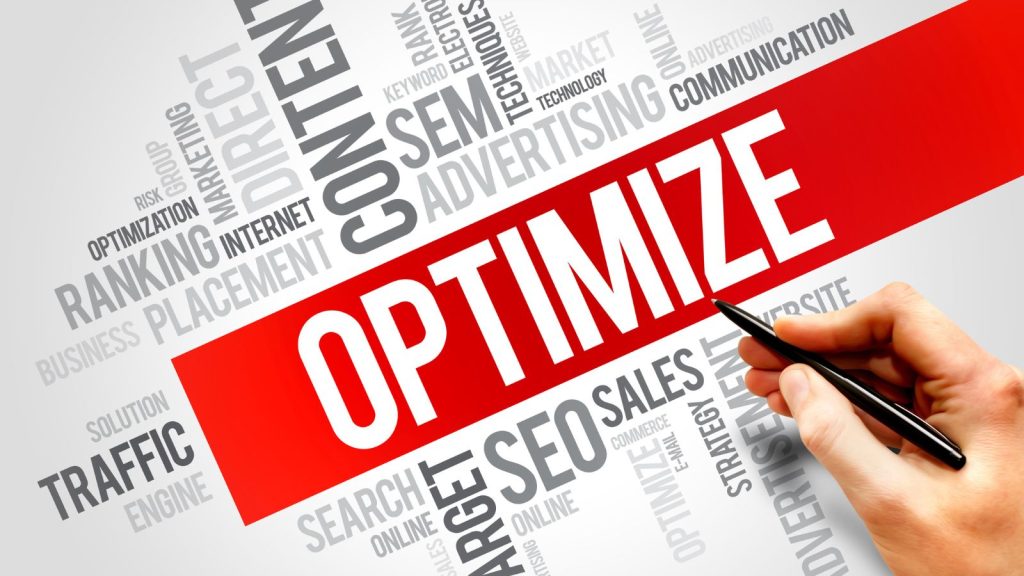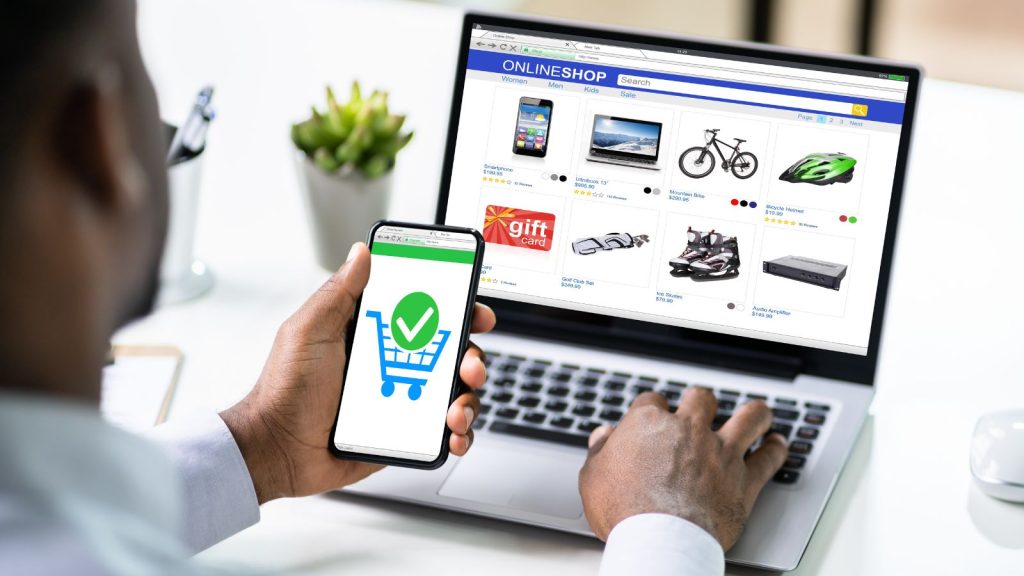You have a great website, a truckload of items for sale, and you feel like it’s all rainbows. However, there is one small, but important problem. No one is hitting the button or link that will connect them to your eCommerce store. The question on the lips of many who run eCommerce stores has to do with site visibility. “How can I reach my customers and target market?” is a question that borders on-site optimization.
The more visible you are to search engines, the more visible you will be to your target market. The goal of eCommerce is to sell your products literally anywhere at any time. Achieve this by maintaining a top position on the results page of search engines, especially major ones.
The best investment you can make is in search engine optimization (SEO). You are sure to reap long-term benefits from such an investment. In other words, its benefit outweighs the cost. Companies that ignored SEO opportunities have seen a slow and steady decline in customer conversion rates and revenue.
While some see SEO as a waste of time, it really isn’t when it comes to enhancing your search visibility. It’s necessary to point out that SEO isn’t just about bringing in more traffic. It encompasses so many more benefits we’ll discuss below.
Why is SEO important for your eCommerce store?
You should probably ignore this post if you have no intention of taking your eCommerce store to the next level. A bit harsh, but true! With SEO, you give your store a fighting chance for the conversion of mere web surfers to customers.
Optimizing your online store isn’t only about building a search-friendly website, but making yours a site people find organically. If they feel you can fulfill their needs then positioning your site in their paths adds up to success.
Unlike paid search adverts, you don’t pay for SEO. This is because top search engines like Google look for pages containing quality, relevant information regarding search inquiries. The uniqueness of your content is also another factor that is put into consideration. The loading speed of your site and its user-friendliness is also considered. It’s also about the level of engagement of persons when they visit your site. All these affect ratings at the top of search engine results.
The first step to optimization is finding out what your customers are searching for. Then you have to use that information to build a strategy to get eCommerce store visibility – to boost organic traffic via search engines. This strategy involves research into keywords that can drive your search engine rankings.

Benefits of eCommerce Store Optimization
We’ve looked a the benefits you stand to gain as an eCommerce store owner with regards to search optimization. But the goal of your site optimization is to increase page relevance so it appears at the top search results.
Through optimization, you increase your relevance to your target market, thus increasing the traffic to your site. This is because you will be in a position to fulfill the information needs of your customers with targeted messages.
It increases awareness of your eCommerce store because search engines work every minute and aren’t restricted by location. Customers generally think the first result produced by their search query is the best, because it’s at the top. Hence, greater brand value is achieved from the resultant effects of site optimization.
Unlike your regular advertisements, the results are prominent and long-lasting. However, you will need to perform maintenance to keep your site consistent in its top ranking.
Site optimization can give a brand a competitive advantage. Imagine maintaining the top ranking of your site! The benefits abound and can provide a competitive advantage. I bet you probably don’t go beyond the first five pages while surfing the web in search of products and services. All these and many more are the benefits SEO can offer and why it’s important to ensure that your eCommerce store gets top ranking which will generate higher clicks and increase traffic to your site.
That being said, here are some optimization tips to unlock all these benefits for your eCommerce store.
Tip 1: Originality, Quality, and Content Personalization Are Key
Think of duplicity as the sworn enemy of search engines that attracts penalties that are detrimental to the success of eCommerce stores. There is a need to assess the content that is present on your site.
You may argue that most product descriptions, for example, are quite similar and can lead to the duplicity of content produced. To that, I will say: be more creative in your descriptions and avoid generic terms which many sites are prone to using. Skip the norm and write compelling product descriptions that will command interest. Your content can create a sense of urgency to drive purchase action.
Your content should communicate the unique solution you’re offering to your customers. Of course, to do this, there is a need to determine the problem that your offer will solve in the life of your customers.
Much more than originality, the overall quality of your content is very important. Not only do top search engines like Google recognize quality content because it’s a crowd-pleaser. Everyone will naturally want to read quality content that can be easily understood.
Your content should be free of grammatical errors and misspellings as this can add to the overall quality of your work. Google, for instance, takes note of sites without errors and you will do well to ensure that your eCommerce store is free of them.

Tip 2: Speed up Your Website
It’s always frustrating when you finally find the site that houses the perfect solution you’re looking for and it takes time to access the website. A recent survey according to Crazy Egg, a 1% delay can result in 7% fewer conversions, 11% fewer page views and 16% reduced customer satisfaction. All these resultant effects were as a result of a delay of 1% which seems so small but has the capabilities to reduce sales drastically.
Gone are the days where visitors will be patient to wait while sipping juice for your site to load; no one is that patient these days. I agree it can be quite different for brands with established presence and image but either way, shoppers will readily beat the path to a store that has a site with a faster response time.
I guess it’s safe to say that this is one of the reasons why customers readily opt for eCommerce sites in a bid to enjoy the transactional speed that brick and mortar stores don’t offer. Furthermore, when your eCommerce store site is easy to navigate, it goes a long way in drawing people to the site, leading to eventual purchase. You may think it does not matter but consumers’ rate site usability and functionality as one of the important aspects that they watch out for.
The essence of SEO is to increase the likelihood that people will visit your site and delays in load time defeat this purpose. Google takes the speed of your site into consideration in page ranking and can influence how easily customers are able to find you.
Your site speed can be improved by compressing large pages so that they can consume lesser bandwidth in their loading and take up less space. Browser caching can also be used to store elements that are necessary to a viewer on their hard drive, thus leading to faster load time at the visitor’s return. A review of your site’s hosting plan should be done as it can add to the delay in the load time of your site.
Tip 3: Invest in Keyword Research
You need to understand the relevance of keywords in the optimization goal of your eCommerce store. The right keywords are words that are used regularly by people when conducting searches on the net. So think of SEO keywords in the light of key phrases and words in your product content that makes it possible for people to find your website through search engines.
To speak the same language that your customers are speaking, there is a need to invest in keyword optimization which is a major element of SEO and can increase your store’s visibility.
Thus, a list of keywords has to be compiled based on research on what your customers use in their search entries. There is no structured process for arriving at the perfect keyword. It’s majorly trial and error with a move to discovering new trends and patterns every day. This is why it’s not a one-time effort but should be an evolving part of your operations.
On the issue of continuity, most stores are quick to fall into the pit of doing SEO keyword research once, forgetting that it requires regular updates and expansion. Another mistake is targeting keywords that are popular and highly competitive for you to handle. This will result in unnecessary difficulty in ranking high in result pages as a result of increased competition for that same spot.
Make your SEO keywords work for you and get the desired results through proper keyword grouping and organization. To make it work for you, there is need to explore various ways in which customers structure languages in their search on an idea or topic. This will help you drive not just traffic but the right traffic to your eCommerce store; the kind with the power to convert.

Tip 4: Include Product Reviews on your eCommerce Store
Often ignored, product reviews are another method to optimize your store’s search and increase conversion rates. One thing is certain; reviews are a sure way to increase customer trust which in turn increases conversion. Customers are more prone to believe in peers than brands.
Reviews and ratings have become more prominent in recent times and a necessary resource to consult in our daily shopping decisions. According to research by Bigcommerce.com, more than 80% of consumers consult reviews when making a purchase decision and the inclusion of these reviews to your site can increase sales by 18%.
Go all out on your product reviews; place them front and center, both those tied to specific products and product categories. Include links that can take customers directly to a page on testimonials on your home page. Publish both good and bad reviews, it makes you more real. Appreciate those who make out time to give the reviews, no matter how negative they are.
The social aspect of your brand shouldn’t be relegated to the background because reviews are social proofs that can build trust. Great store sites have adopted the practice of displaying testimonials from past buyers as evidence that your site isn’t just a generic one; taking it a notch further by including employee preferences to humanize their products.
Tip 5: Everything You Do Should Be About Your Customers
This is a tip that summarizes the entirety of why your business is in existence. You have to make customer-centric decisions to be ahead of the competition and be rewarded with loyal customers.
There is need to position the content of your site to communicate a “you matter” to shoppers of your product. Is your content tailored to the needs of your visitors? Your brand should be relatable and show customers how your product is the best solution to the problems they have. The reason behind every shopper’s purchase is the answer to the question of “what is in it for me?”
You have to tailor your site’s content to the person shopping. However, you also have to consider the end-user of the product when drafting copy. You have to consider the possibility that the person shopping is different from the person using the products and services. Thus, observe your site objectively, just as a customer would if you want to understand how your customers see your shop.
Back up customer-centricity with consistent, robust action. Today’s customers are looking for fast, relevant, and seamless experiences and you need to deliver according to their needs. Competition is on the increase and there is a need to provide a pain-free online experience that surpasses their expectations if you want to stay ahead of the competition.

Tip 6: Your eCommerce Store Site Presentation Matters
Perfection is a far-fetched idea, but it shouldn’t stop you from trying. You can have the best products available on planet earth but if it’s not presentable and inviting to the eye, customers will do a turn-around immediately they arrive at the waiting arms of another competitor.
One sure trick is to find a balance between too much and too little happening on your page. Quality should be transparent on your site. If your store is full of low-quality images, it’ll be displeasing to the eye and won’t encourage a further stay.
The presentation does not focus on quality images alone but also on product descriptions. Unnecessary long-winded product descriptions that beat around the bush aren’t appealing and will negatively affect your site presentation. Instead, convey only the information that customers will need to make a purchase decision in the most appealing way possible. Your message should be as clear as possible.
Your web page shouldn’t do everything but there should be a divided layout where specific functions are fulfilled. Think about which fonts you use, too. You don’t want to be using multiple typefaces even when it’s a different topic. You also don’t want the font to be too large that it becomes disjointed or too small that it’s barely readable.
Presentation covers the structure, layout, and orderly arrangement of information. Of course, it will be quite a struggle to achieve this but the knowledge of “what would I want to see if I were a customer?” will help you know what to include and what not to.
Tip 7: Image Optimization is Important
Uploading quality, high definition images should be your mantra. Images of high quality can make your page stand out. Brands are outdoing themselves and incorporating shots of 360 degrees so that their pages can stand out. More importantly, customers love them!
Image optimization increases conversions and attracts more attention to your site. More so, it reduces the rate of product returns, since it shows parts of the product in a more detailed way.
You can’t run an online store successfully without proper mastery of image optimization. Image optimization encompasses all the processes you undertake to reduce your image size while not compromising on the quality and increasing your page speed; thus, helping it rank higher in search engine results.
Label all of your images properly for easy identification. Image SEO comes to mind here – the use of relevant keywords on your images to rank your webpage higher. Descriptive and creative file names are necessary for image optimization to work. Use website analytics to find the keywords customers use in association with your product.
It’s necessary to select the dimensions and angles of your product image very carefully. The image used should capture shots from the interior and the rear. However, in doing all these, the file size of your image shouldn’t increase the delay in loading your site. A discovery Amazon made highlights this. They would lose $1.6 billion a year if their pages were only one second slower.
Conclusion
Optimizing your store ensures that each page has a meta-description with the right keywords that will enable a site rank higher in search engines. Keyword optimization is a tool a company can use as a weapon to maintain a competitive advantage.
Content is king and you can use it to optimize your eCommerce store. This means that the content you produce should be useful, informative, credible, engaging; all in a bid to give users a memorable experience and not just for the sole reason of ranking high on search engines.
Note, you shouldn’t use SEO shouldn’t in isolation. Add other visibility strategies like using AdWords and Pay Per Click for better results. Finally, experiment until you find the perfect combination that works best for your store optimization needs. Book a demo of the PIM System for eCommerce today.
Now that you know how to optimize your eCommerce store, click here to see what Catsy can do for you.

